The Beginning
Ansett Airways was first registered in 1936, formed by Reginald Ansett after an investment of 1,000 pounds for its first commercial aircraft.

Ansett Airways Ltd. was incorporated in Victoria as a public company in 1937 with services to Sydney, Broken Hill and Adelaide from its base in Melbourne.
Ansett ceased regular operations during World War II and worked under contract to the United States Air Force assisting in the evacuation of the residents of Darwin and Broome.
The company, Ansett Airways Pty. Ltd, was an offshoot of a successful road transport business which was threatening the freight and passenger revenue of Victorian Railways.
This caused the state government to legislate to stop private road transport operators from competing with the railways, but Reg Ansett countered by establishing an airline, since aviation was under control of the national (federal) government and beyond the reach of the state government.
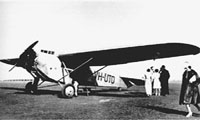
Ansett's first route was between Hamilton, in Western Victoria, and Melbourne, the state capital, to be operated by a Fokker Universal monoplane, and to counter the embargo of him carrying passengers as he was registered to carry freight, he sold each passenger one orange for £2, and on arrival claimed that they were carrying freight. By this method he was finally, albeit begrudgingly, provided with the correct licence for his airline.
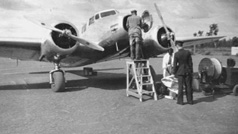
The rapid success of the airline led Ansett to float the business in in 1937, and as the route network expanded, Ansett Airways imported Lockheed 10 B Electra 10 seater aircraft.
During World War II (1940 -1945) Reg Ansett opted to suspend all scheduled services in favour of more lucrative work for the USAAF, including additional aircraft maintenance contracts, but after the war Ansett battled to re-establish his domestic routes using war-surplus and converted C47 to Douglas DC-3s, and a collection of smaller aircraft. In May 1946, Ansett Airways became Ansett Transport Industries.
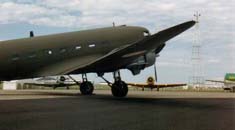
Ansett Growth
TAA and ANA battled for supremacy in the 1950s, but TAA was better managed and having superior aircraft, had ANA on the verge of bankruptcy by 1957.
Ansett had operated as a bit player around the big two, maintaining budget fares on its interstate operations with DC-3s and Convair CV-440s. The airline was supported by extensive road transport operations, Ansett Freight Express and Ansett-Pioneer Coaches, and the Ansair coach-building operation in Melbourne.
The Menzies Liberal government supported TAA by reason of the excellent dividends it paid to the government, but wanted to constrain TAA having a monopoly on domestic services if ANA were to collapse.
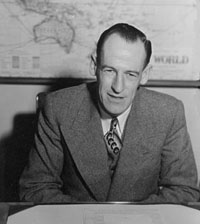
The only alternative was for Ansett to buy out the ANA operation, and the government was prepared to support such action. The ANA directors resisted, but eventually caved in to Ansett's offer due to lack of interested parties or buyers.
Ansett's (final) offer of 3.3 million pounds (3 million of government money plus 300,000 pounds acquired from the most prominent supporter, being the Shell Oil Company) was finally accepted.
The Douglas Aircraft Co. was also concerned about ANA's demise as ANA had preferred their aircraft. TAA had ceased to be a customer for their aircraft with the purchase of British Vickers Viscount and previously Consolidated Vultee Convairs.
The new airline would be called Ansett-ANA, a name that would remain until 1968.
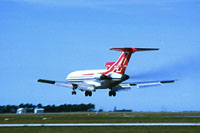
Ansett-ANA was now profitable courtesy of government support, but Reg Ansett's passenger facilities around the country were at best described as basic.
Following the takeover of ANA, Reg Ansett lobbied the government to stop TAA's purchase of Sud Caravelle jet aircraft, stating he was concerned about his airline's ability to finance jet aircraft, and expense necessary with the engineering upgrade required to go to pure jet aircraft. TAA had been operating prop-jet Vickers Viscounts since 1954 and had expertise in jet and turbine technology.
This action delayed the introduction of pure jet aircraft to Australian skies by 5 years until 1964, when the Boeing 727-100 began flying.